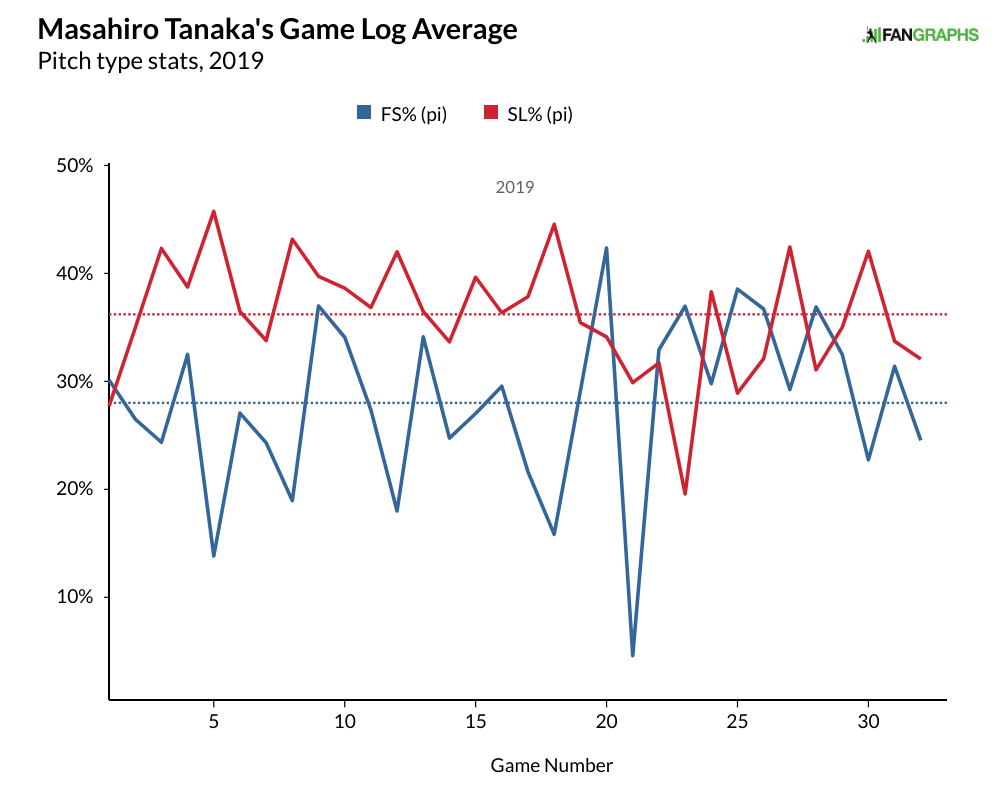With the Cardinals’ offense held to two runs across the first three games of the NLCS against the Nationals, the team has dug themselves a hole. The odds of the Cardinals winning four straight games aren’t high; our standard odds give the Cardinals a 3.1% chance at taking the series with ZiPS’ method going a bit higher at 4.9%. Winning four games in a row against a good opponent isn’t impossible. Just a few weeks ago the Cardinals pulled off a four-game sweep to solidify their playoff position. Back in April, the team completed a four-game sweep of the Dodgers and later that month, they won the first three of a four-game set against the Nationals. If Cardinals were to do the same now, they would force a Game 7. But that St. Louis has done something similar doesn’t change the current situation, which is dire, and the team isn’t helped by the fact that they have to turn to their fourth-best pitcher tonight when a loss ends the season.
Tonight’s start isn’t Dakota Hudson’s first with the Cardinals facing elimination. Just a week ago, he took the mound with St. Louis down two games to one against Atlanta. Hudson lasted four and two-thirds innings and gave up four runs, though three of those runs were the product of poor defensive play. The Cardinals eventually rallied to win that game in 10 innings and then blew the Braves out in Atlanta to advance to the NLCS. Hudson’s performance in that start was fairly typical for him, with a low number of strikeouts, a couple of walks, and what would have been a low run total if the normally stout Cardinals defense had supported him.
Tonight’s game isn’t likely to turn on the performance Hudson provides, given the offensive offensive performances by St. Louis so far, but if the Cardinals are going to extend the series, it’s important that their starter keep them in the game. Hudson’s profile is unique and he’s been a near-perfect fit for the Cardinals this season. Looking at various WAR metrics, his 1.0 WAR indicates mediocrity. If we were to use WAR based on his .335 xwOBA, we’d see a similar result. Over at Baseball-Reference, he’s put up a 2.2 WAR, a roughly average pitcher. Baseball Prospectus sees a similar 2.4 figure.
Where Hudson separates himself from that mediocrity is in our RA9-WAR, where he has put up a 3.4 mark this season, which ranks 18th in the National League. Given what all the other WAR metrics say about Hudson, along with his low strikeout totals and high walk rate, it’s not a stretch to say that his 3.4 RA9-WAR inflates his talents a bit. However, it also wouldn’t be a stretch to say that Hudson combined with the Cardinals defense is one of the 20-best pitchers in the NL. Hudson couldn’t move to Queens with the Mets infield defense and be that pitcher, but with Kolten Wong, Paul DeJong, Paul Goldschmidt and Tommy Edman (or Matt Carpenter), he gets the results of a good pitcher. Hudson has one elite skill, and he and the Cardinals combine to get outs at a very high rate. Read the rest of this entry »


